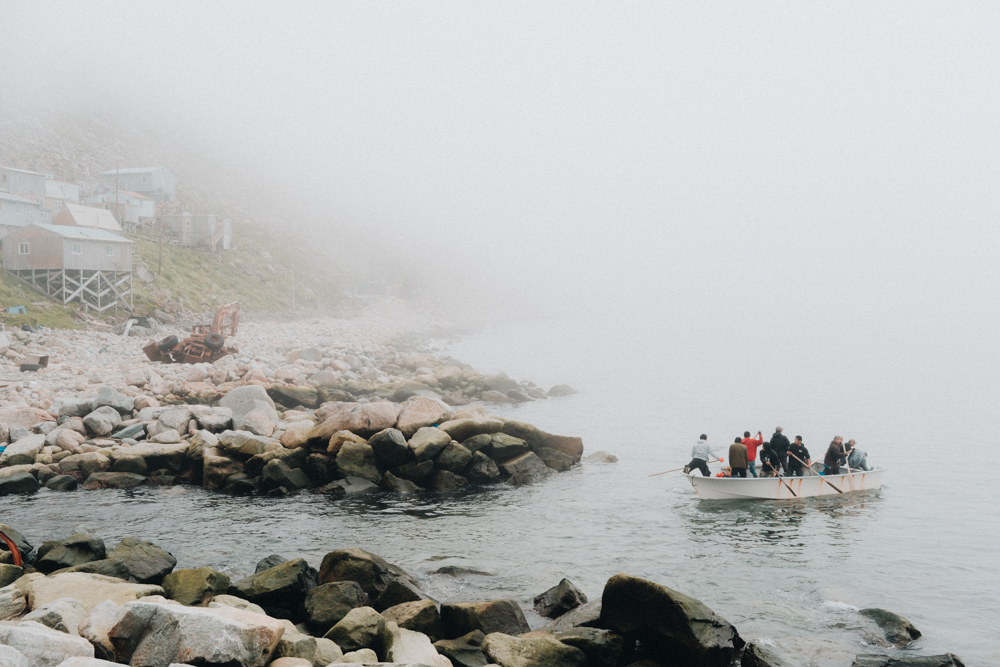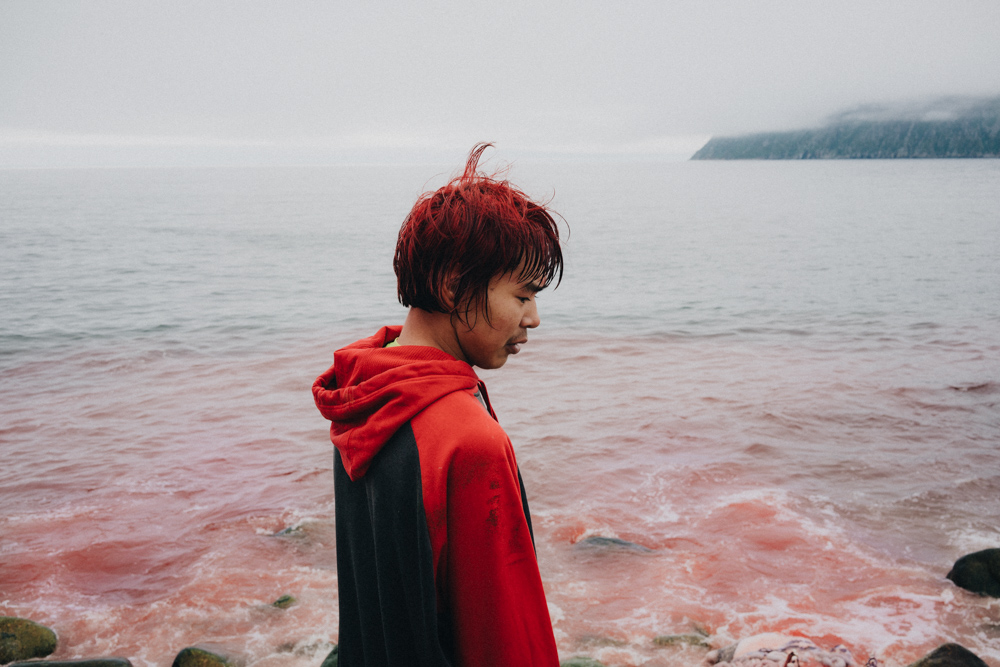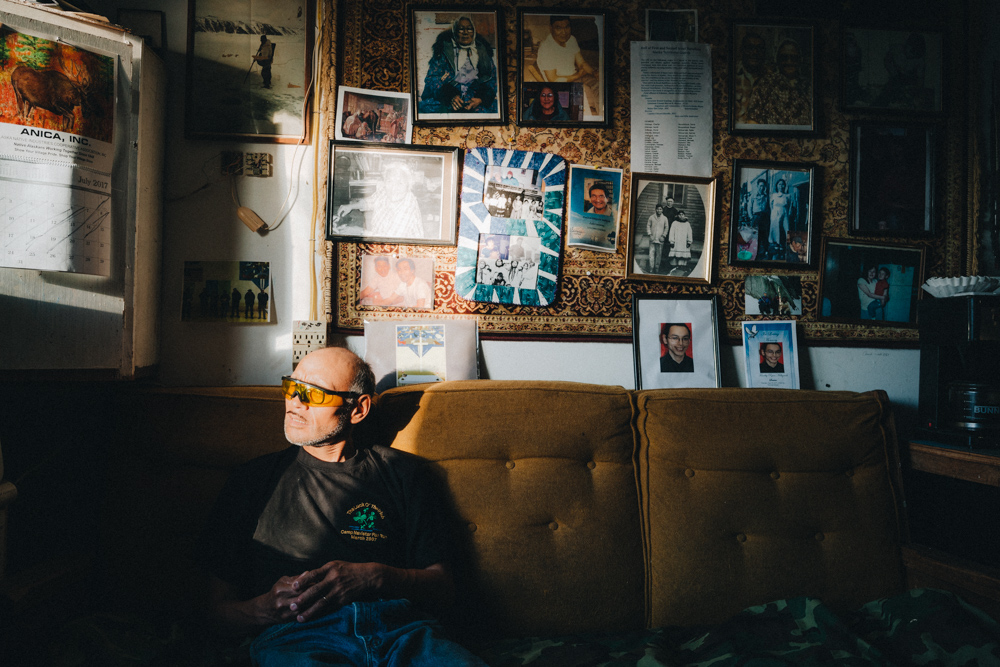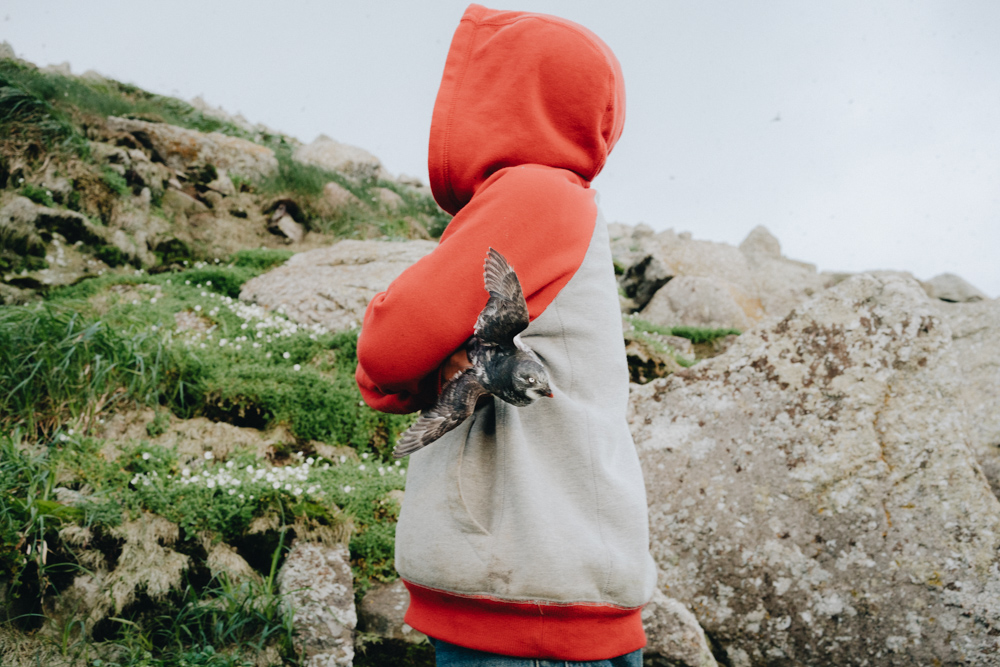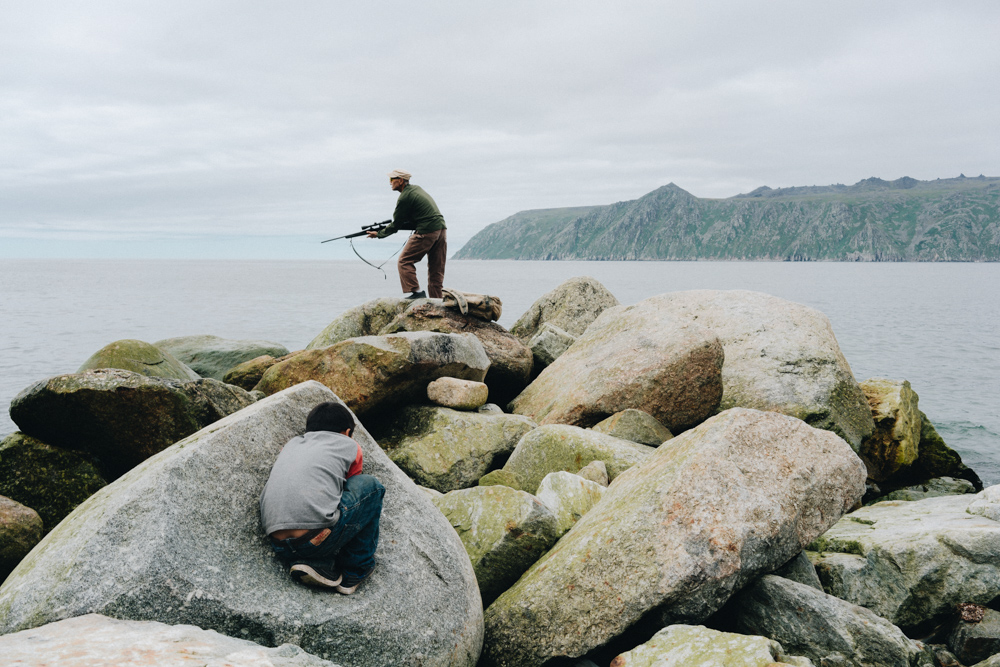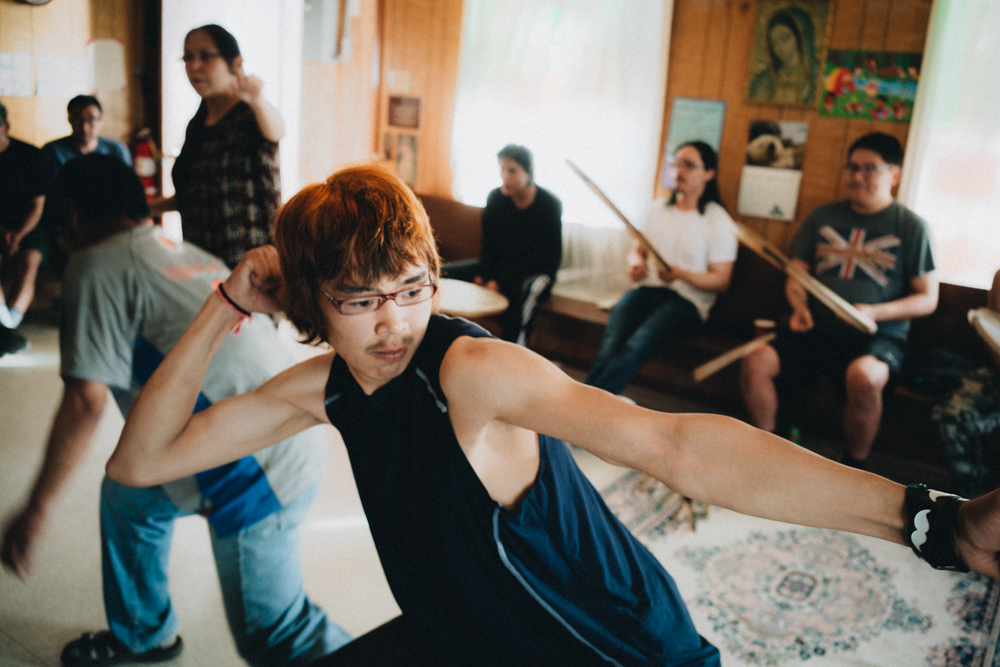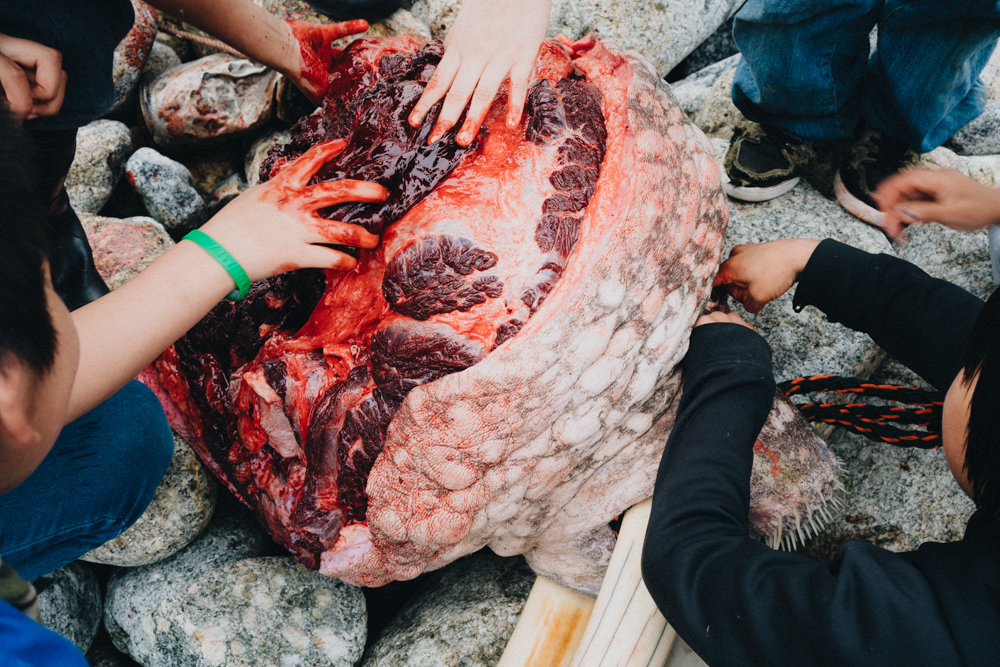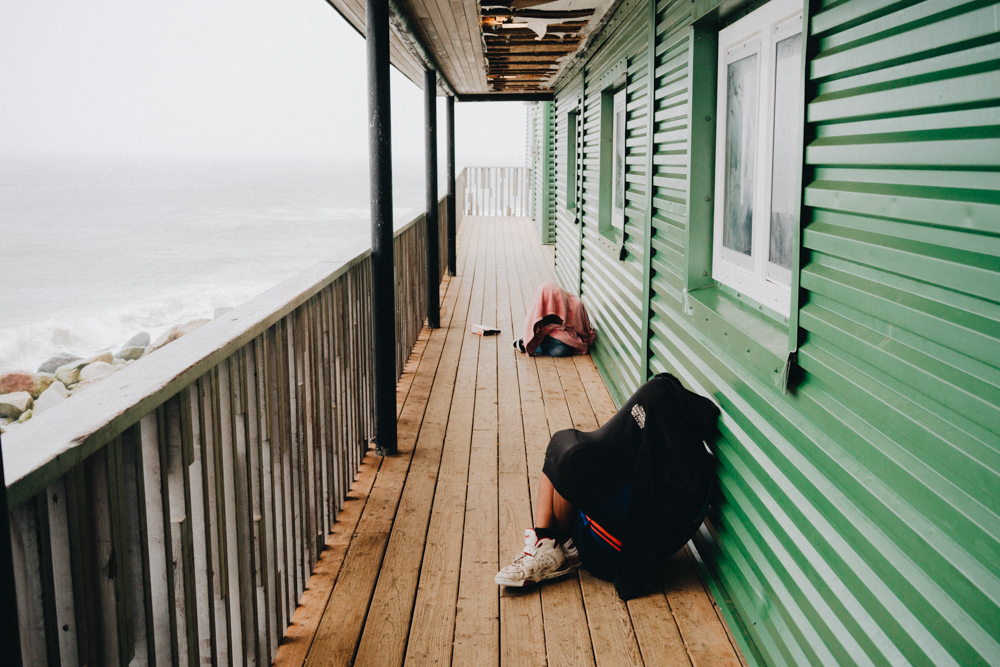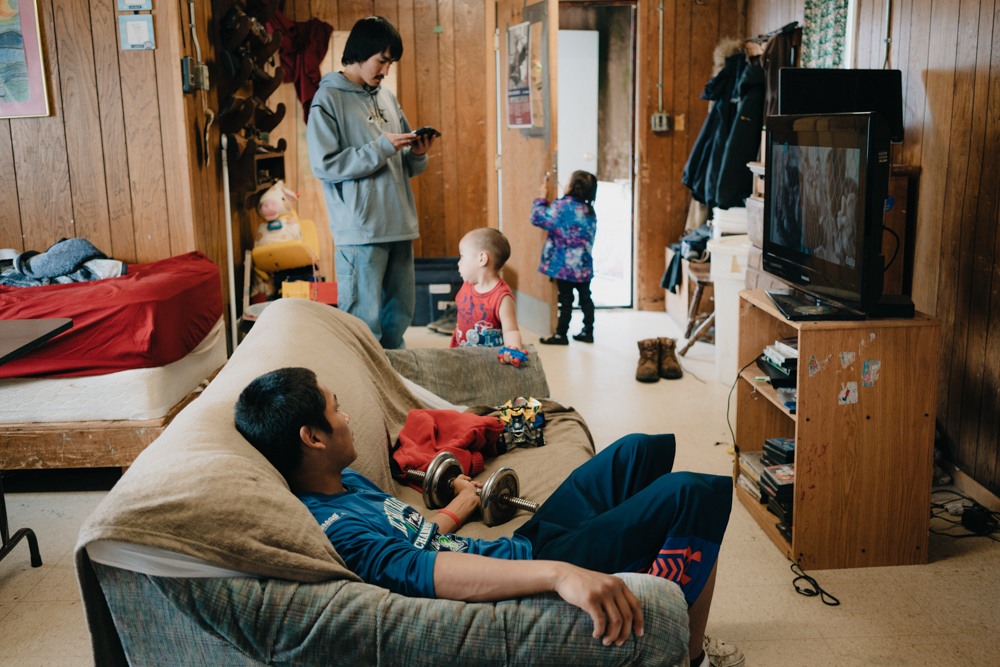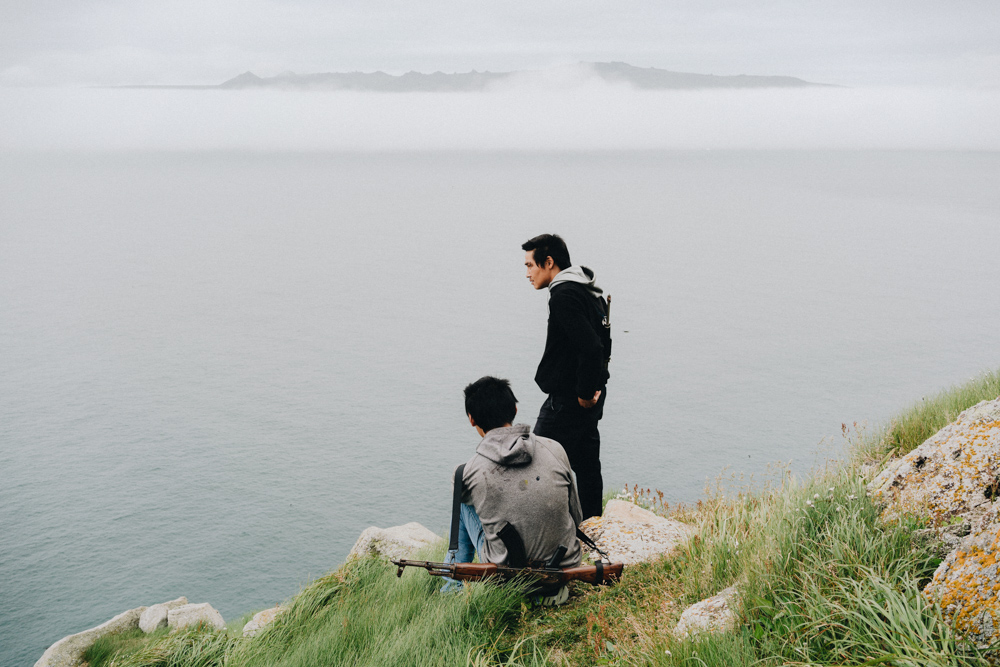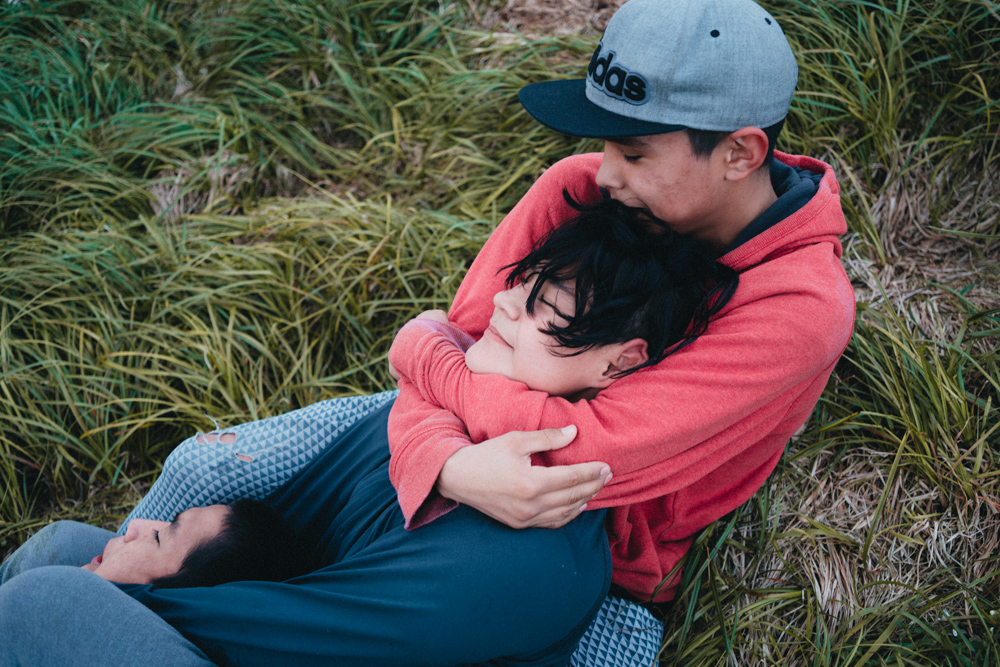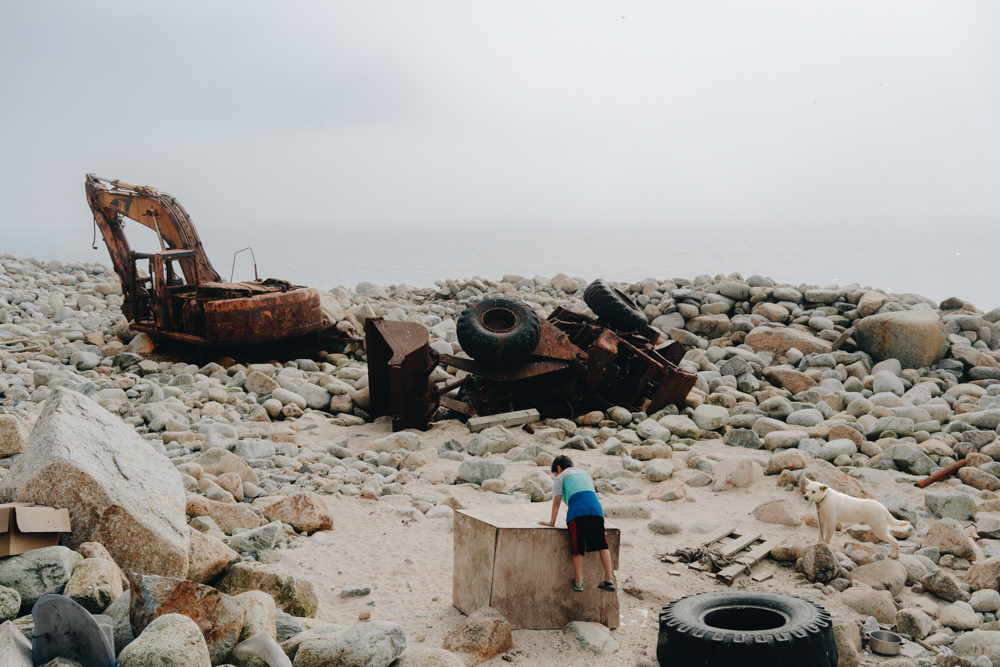Juan Herrero: Photographing the Far North
If one could read human history in the form of a consolidated text, the potential for unique narratives would at first appear infinite. Vast differences in culture, time period, and geography would disguise patterns and repetition. However, if history were digestible with the immediacy of a novel we’d realize we engage in the same stories time and time again. In these stories, people share language, resources, and family ties across borders. In these stories, various forms of government go to war and inevitably create division. In these stories, traditional ways of life are forever altered by vast forces such as colonialism or climate crisis; and slowly but surely the new generation yearns for a way of life far from that of their ancestors. This story is familiar and yet it is made new by time and place. In The Island of the Day Before, Spain-based photographer and director Juan Herrero explores these themes on the remote arctic island of Little Diomede. While it’s easy to look at these visions of rock and endless sea and think these experiences foreign, the longer I spent with Herrero’s work the more I embraced the idea that despite culture, time period, and geography, only one narrative pertains: change.
Juan Herrero is a photographer and director born in Spain.
After studying economics he moved to the Middle East in 2012, where he started working on editorial assignments. A year later he was selected to attend the Eddie Adams Workshop in New York. Since then, he has been working around the world. In 2016 he was selected as one of ‘PDN’s 30 New and Emerging Photographers to watch’.
He has received grant support from the Pulitzer Center, the National Geographic Society and GroundTruth among others. For the latter, he was a co-winner of an Edward R. Murrow award as a video series director.
His photo and film work has been published in National Geographic, The New Yorker, TIME, Harper’s, VICE, Outside, Newsweek, Paris Match, Der Spiegel, BBC, PBS, among others. He has been commissioned by clients like Human Rights Watch, Google, Red Bull, etc.
The Island of the Day Before
The Diomedes are two remote islands in the middle of the Bering Strait. Separated by two miles of water and the international dateline, these two dots in the Arctic are where Asia and America meet. In the past, both islands were inhabited by a common native community, which shared land, water, language and family. During the Cold War, the Russian government evacuated Big Diomede; relocating the native population to the mainland and turned the island into a military base. The divide came to be known as the “Ice Curtain.”
Little Diomedians were left alone in their tiny village, looking west towards their deserted brother island. Today, ninety native people still live in Little Diomede. They hunt, fish and eat what the island provides. But they face an uncertain future due to climate change, increased arctic shipping, hunting regulations, and a younger generation dreaming about a life in mainland.
By exploring identity, resilience, the coming of age, the balance between tradition and modern life, in a declining civilization, many questions arise about my own culture and identity. The relativity of remoteness and connectedness…
This tiny cold island, far from our minds and conceivable horizons, might be at the same time such a good allegory of our conflicted world.
I find the title, The Island of the Day Before, so evocative and intriguing. Could you explain the origins of this project and how you eventually named this work?
It is a beautiful title. I took it from a novel by Umberto Eco.
I had read about Little and Big Diomede, one USA and Russia the other, these two remote islands in the middle of the Bering Strait are separated by 2.4 miles of water and the international date line. In the past they were home of a common Inupiat community, which shared land, water, language and family. These people used to regularly move between the islands, and even walk (in winter when the sea is frozen), including the occasional crossing of the bride. But this slowed as USA-Russia tensions escalated. Eventually the Russians expelled natives from Big Diomede and turned it into a permanent military base, closing the so-called “ice curtain”. So, just 2.4 miles East and 23h difference, Little Diomedians were left alone on their tiny island, literally ‘the island of the day before’.
My writer friend Tik Root and I had been pitching this story to outlets for a long time with no luck. The opportunity arrived when some colleagues were set to travel to the islands to film a doc about a reunion of some Little and Big Diomedians after being separated for so many years. They were so cool to include me in the crew as a second cameraman, even knowing that I would be permanently attached to my photography camera.
How informed were you regarding the history of the Diomedes prior to arriving on the island? What was an experience you had while working that shifted your initial understanding of this remote place?
I had read books about life in the Arctic and looked at info about the place, but honestly there wasn’t much available. Although, honestly one thing I love when I travel is to try not to have any preconceived ideas by knowing too much stuff beforehand. So, for better or worse, I tend to arrive at distant worlds like this one with innocent eyes and an open heart.
One day I went to the island store and saw a bottle of laundry detergent for $44.15. I realized that life on this island is very complex. The current lifestyle is sort of halfway between traditional Inupiat and the inexorable ways of the West, in a middle ground limbo where they need to buy crazy expensive detergent with very little economic resources. It is like trying to travel in a train with two engines, one pulling forward on either end. I felt this is a massive underlying tragedy that permeates everything, and it is the source of many problems that this community is going through.
You mention in your statement that many young people hope to leave the island in search of a different life. What was your sense of the local youth culture on Little Diomede?
It was summer, so no school and ‘nice’ long days to wander around. In general, Diomedian adults were kind of elusive, so I ended up hanging out a lot around young people. Those kids are amazing and full of energy. In the mornings they hang around to see what’s up. Some girls would be taking care of the youngest kids. If adults are hunting walruses everyone would quickly go help or just stick around. There is a daily gathering at the school front deck to catch the only wi-fi signal in the island, open for a little while every afternoon. They would do the rounds of sharing memes, likes, posts and back to life. They’d also hike up the hill, chew grass and kill marine birds when they arrive at their nests in the evening. If it’s rainy, everyone would be watching movies or playing video games.
Days passed and I started to know that behind some of their smiles there were sad stories. I also saw the older kids and young adults feeling like they had lived enough ‘groundhog days’ already on the island. Everyone seemed to deeply respect their traditions, but while some remained interested and engaged in them, they also talked about jobs outside.
How long did you spend on the island and what feelings arose upon your return to the mainland? In what way did your time on Little Diomede reshape your perspective of your own life?
I spent 17 days on the island (some of them were extra days as the helicopter would not come pick us up due to bad weather). It now feels like a distant dream. I felt that everything that happens in that tiny dot in the Arctic is so far from my own little world. Yet I reflected on the idea of isolation and connectedness and how relative it is, and how narrowly it is perceived in the comfy cities. A Diomede Inupiat elder would talk about connectedness in a very different way than their young adults. I felt guilt somehow, seeing strong and good values fading towards the ones cultivated in our sugary societies.
In regards to the future of the community, did you find that island locals were more aligned or divided in terms of their perspectives? What were some commonly held ideas concerning climate change and other issues that the current generation is posed to deal with?
I felt the Little Diomedians were sensitive to people from the outside coming to the island and writing about their problems. So I tried not to ask much about negative stuff. But in general, many of the Little Diomedians were aligned on how warmer it is nowadays. They do what they can, like building thicker walls of rocks to cope with bigger waves or to adapt to a winter on an ice sheet where not too long ago an airplane could land on, and now it is often too dangerous even for a person to step on. There is an obvious generalized concern about the increasing scarcity of available food (seals, walruses, bears, etc) which could add to the eventual decision of relocation, like other native communities have had to endure.
Climate change is a very different issue for the people that live watching the tides, sensing the air temperature, listening to the migrations of birds, looking at the thinner and thinner ice sheet on an everyday basis.
Does this work feel complete to you? If so, what are you currently working on and if not how do you plan to continue?
This work might be enough for a magazine but it doesn’t feel complete to me. I wish I could go back and try to pursue a greater body of work. But again, the logistics are not easy, it is far, it is expensive to reach and to stay there. I guess I am happy to feel grateful to have been able to spend time in such an inspiring place.
I am currently trying to develop personal work on analog photography. I would like to shift to some extent from the editorial world towards the photobook and galleries. I try not to be obsessed with photography though, unlike many of my colleagues. I want to do other stuff as well. I work on films, whether docs, artistic or commercials. I also make van conversions, cabins, I take care of trees and climb walls.
Posts on Lenscratch may not be reproduced without the permission of the Lenscratch staff and the photographer.
Recommended
-
Paccarik Orue: El MuquiDecember 9th, 2025
-
Lauri Gaffin: Moving Still: A Cinematic Life Frame-by-FrameDecember 4th, 2025
-
Dani Tranchesi: Ordinary MiraclesNovember 30th, 2025
-
Art of Documentary Photography: Elliot RossOctober 30th, 2025
-
The Art of Documentary Photography: Carol GuzyOctober 29th, 2025

